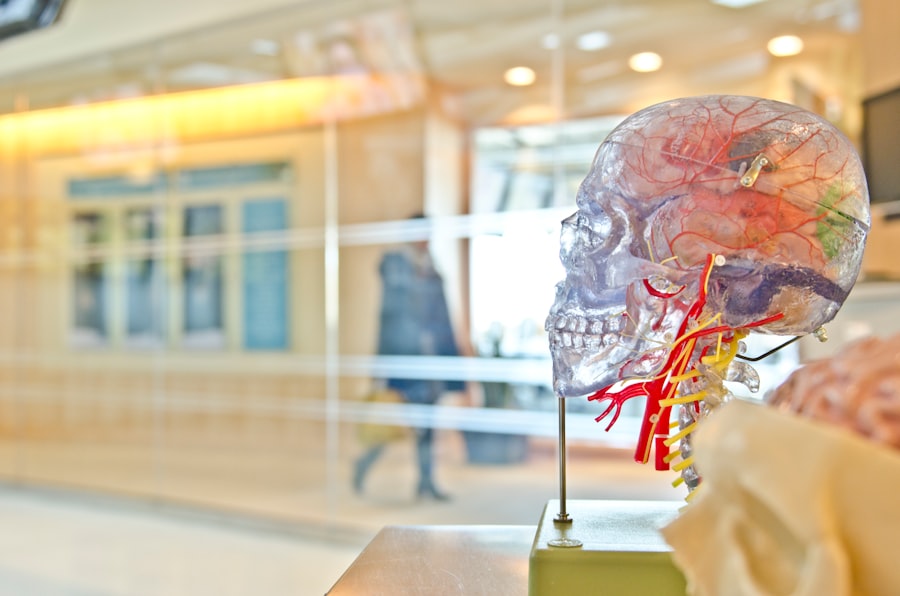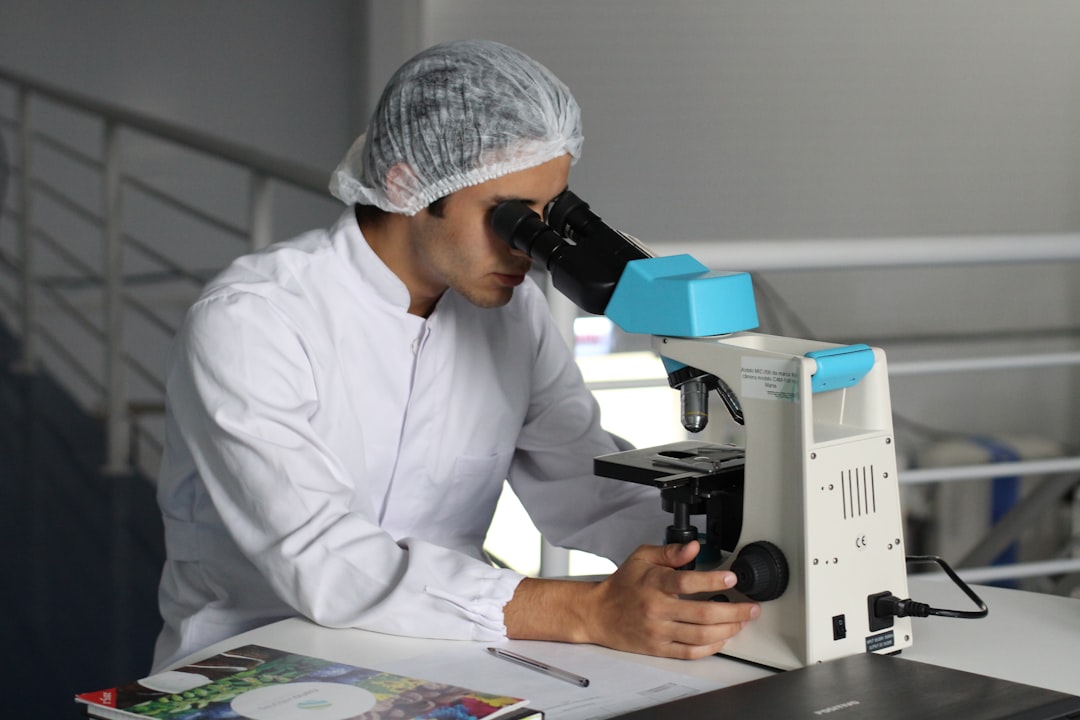In recent years, the integration of artificial intelligence (AI) into healthcare has revolutionized various aspects of medical diagnosis and treatment. One of the most promising applications of AI technology is in the realm of stroke detection. Stroke, a leading cause of death and disability worldwide, requires rapid diagnosis and intervention to improve patient outcomes.
Traditional methods of stroke detection often rely on the expertise of medical professionals and can be time-consuming, leading to delays in treatment. AI-based stroke detection systems aim to enhance the speed and accuracy of diagnosis, ultimately saving lives and reducing the burden on healthcare systems. AI algorithms are designed to analyze vast amounts of data, learning from patterns and anomalies that may not be immediately apparent to human observers.
By harnessing machine learning techniques, these systems can process medical images, such as CT scans and MRIs, with remarkable precision.
As we delve deeper into the role of AI in stroke detection, it becomes clear that this technology is poised to transform the landscape of emergency medicine.
Key Takeaways
- AI-based stroke detection utilizes advanced algorithms to analyze medical images and identify potential signs of stroke.
- AI systems play a crucial role in analyzing medical images such as CT scans and MRI scans to detect early signs of stroke, enabling faster diagnosis and treatment.
- Real-time stroke detection in hospitals using AI allows for immediate identification of stroke symptoms, leading to quicker intervention and improved patient outcomes.
- AI-driven early warning systems for stroke detection can help healthcare providers identify high-risk patients and intervene before a stroke occurs.
- The potential impact of AI-based stroke detection on patient outcomes includes faster diagnosis, reduced disability, and improved survival rates for stroke patients.
The role of AI systems in analyzing medical images for stroke detection
AI systems have shown exceptional promise in analyzing medical images for stroke detection, particularly through the use of deep learning algorithms. These algorithms are trained on large datasets of annotated medical images, allowing them to recognize subtle changes in brain structure that may indicate the presence of a stroke. For instance, convolutional neural networks (CNNs) have been employed to detect ischemic strokes by identifying areas of reduced blood flow in brain scans.
The ability of these systems to learn from diverse datasets enhances their accuracy and reliability, making them invaluable tools for radiologists and neurologists. Moreover, AI-driven image analysis can significantly reduce the time required for diagnosis. In emergency situations where every second counts, AI can quickly process images and provide preliminary assessments, allowing healthcare professionals to make informed decisions more rapidly.
This capability is particularly crucial in cases of acute ischemic stroke, where timely intervention can dramatically improve patient outcomes. By streamlining the diagnostic process, AI not only aids in identifying strokes but also helps prioritize patients based on the severity of their condition, ensuring that those in critical need receive immediate care.
Real-time stroke detection in hospitals using AI

The implementation of AI systems for real-time stroke detection within hospital settings marks a significant advancement in emergency medicine. Hospitals are increasingly adopting AI technologies that can analyze incoming patient data and medical images as they are generated.
For example, AI algorithms can continuously monitor vital signs and imaging data from patients presenting with stroke symptoms, alerting medical staff when abnormalities are detected. In addition to enhancing diagnostic speed, real-time AI systems can facilitate better communication among healthcare providers. By integrating with electronic health records (EHRs) and other hospital information systems, these AI tools can provide clinicians with instant access to relevant patient data and historical trends.
This interconnectedness fosters a collaborative environment where medical teams can make more informed decisions based on comprehensive information. As hospitals continue to embrace AI technologies, the potential for improved patient care and outcomes becomes increasingly evident.
AI-driven early warning systems for stroke detection
AI-driven early warning systems represent a proactive approach to stroke detection, focusing on identifying at-risk patients before a stroke occurs. These systems utilize machine learning algorithms to analyze a multitude of factors, including patient demographics, medical history, lifestyle choices, and real-time health data. By assessing these variables, AI can generate risk scores that help healthcare providers identify individuals who may benefit from preventive measures or closer monitoring.
The implementation of early warning systems has the potential to significantly reduce the incidence of strokes by enabling timely interventions. For instance, patients identified as high-risk can be targeted for lifestyle modifications or prescribed medications that may mitigate their risk factors. Furthermore, these systems can enhance patient education by providing tailored recommendations based on individual risk profiles.
As healthcare continues to evolve towards a more preventive model, AI-driven early warning systems will play a crucial role in reducing the overall burden of stroke on individuals and healthcare systems alike.
The potential impact of AI-based stroke detection on patient outcomes
The integration of AI-based stroke detection into clinical practice holds immense promise for improving patient outcomes. By enhancing the speed and accuracy of diagnosis, these technologies can lead to earlier interventions, which are critical in minimizing the long-term effects of strokes. Studies have shown that patients who receive timely treatment for strokes experience better recovery rates and reduced disability compared to those who face delays in diagnosis and care.
Moreover, AI’s ability to analyze large datasets can contribute to more personalized treatment plans. By understanding individual patient profiles and responses to various interventions, healthcare providers can tailor their approaches to optimize recovery outcomes. This shift towards personalized medicine not only improves patient satisfaction but also enhances overall healthcare efficiency by ensuring that resources are allocated effectively.
As AI continues to evolve and integrate into stroke care pathways, its impact on patient outcomes will likely become even more pronounced.
Challenges and limitations of AI-based stroke detection

Despite the promising advancements in AI-based stroke detection, several challenges and limitations must be addressed before widespread adoption can occur. One significant hurdle is the need for high-quality training data. AI algorithms rely on extensive datasets to learn effectively; however, obtaining diverse and representative data can be challenging due to variations in imaging techniques, patient demographics, and clinical practices across different healthcare settings.
Without robust training data, the accuracy and generalizability of AI models may be compromised. Additionally, there are concerns regarding the interpretability of AI algorithms. While these systems can produce accurate results, understanding how they arrive at their conclusions remains a complex issue.
Clinicians may be hesitant to rely on AI-generated assessments if they cannot comprehend the underlying reasoning behind them. This lack of transparency could hinder trust between healthcare providers and AI technologies, ultimately affecting their integration into clinical workflows. Addressing these challenges will be crucial for ensuring that AI-based stroke detection systems are both effective and widely accepted in medical practice.
Future developments and advancements in AI-based stroke detection
The future of AI-based stroke detection is bright, with ongoing research and development poised to enhance its capabilities further. One area of focus is the refinement of machine learning algorithms to improve their accuracy and efficiency in detecting strokes across diverse populations and imaging modalities. As more data becomes available through collaborative efforts among healthcare institutions, AI models will continue to evolve, becoming increasingly adept at recognizing subtle indicators of strokes.
Another promising avenue is the integration of multimodal data sources into stroke detection algorithms. By combining information from various sources—such as genetic data, lifestyle factors, and real-time physiological monitoring—AI systems can develop a more comprehensive understanding of an individual’s risk profile. This holistic approach could lead to even more accurate predictions and personalized interventions for stroke prevention and treatment.
As technology advances and our understanding of strokes deepens, the potential for AI to transform stroke care will only continue to grow.
Ethical considerations and implications of using AI for stroke detection in healthcare
As with any technological advancement in healthcare, the use of AI for stroke detection raises important ethical considerations that must be addressed. One primary concern is patient privacy and data security. The collection and analysis of sensitive health information necessitate stringent safeguards to protect patient confidentiality.
Healthcare organizations must ensure that they comply with regulations such as HIPAA while implementing AI technologies. Additionally, there is a need for equitable access to AI-driven stroke detection tools across different populations and healthcare settings. Disparities in access to advanced technologies could exacerbate existing inequalities in healthcare outcomes.
It is essential for stakeholders—ranging from policymakers to technology developers—to work collaboratively towards ensuring that all patients benefit from advancements in AI without facing barriers based on socioeconomic status or geographic location. In conclusion, while the integration of AI into stroke detection presents numerous opportunities for improving patient care and outcomes, it also necessitates careful consideration of ethical implications and challenges that must be navigated thoughtfully as we move forward into this new era of healthcare innovation.
In der modernen Medizin spielt die KI-basierte Schlaganfallerkennung eine entscheidende Rolle, indem KI-Systeme medizinische Bilder und Daten analysieren, um frühzeitig Anzeichen von Schlaganfällen zu identifizieren und somit lebensrettende Maßnahmen einzuleiten. Ein bemerkenswerter Anwendungsfall ist die Echtzeit-Schlaganfallerkennung in Krankenhäusern, wo diese Technologien dazu beitragen, die Reaktionszeiten zu verkürzen und die Patientenversorgung zu verbessern. Für weitere interessante Einblicke in technologische Entwicklungen und deren Auswirkungen auf die Gesellschaft, könnte der Artikel über die historische Evolution des Metaversums von Interesse sein: Historische Evolution des Metaversums.
FAQs
What is KI-basierte Schlaganfallerkennung?
KI-basierte Schlaganfallerkennung refers to the use of artificial intelligence (KI) systems to analyze medical images or data in order to detect signs of stroke and take life-saving measures. This technology can be used for real-time stroke detection in hospitals, as well as in KI-driven telemedicine applications.
How do KI systems analyze medical images or data to detect signs of stroke?
KI systems use advanced algorithms to analyze medical images such as CT scans, MRIs, or X-rays, as well as patient data such as vital signs and medical history. These algorithms are trained on large datasets of stroke cases to recognize patterns and indicators of stroke, allowing for accurate and timely detection.
What are the potential applications of KI-basierte Schlaganfallerkennung?
The potential applications of KI-basierte Schlaganfallerkennung include real-time stroke detection in hospital settings, remote monitoring of patients for early signs of stroke, and integration with telemedicine platforms to provide immediate medical intervention in case of a stroke.
How can KI-basierte Schlaganfallerkennung help in saving lives?
By enabling early and accurate detection of stroke, KI-basierte Schlaganfallerkennung can help healthcare providers to initiate life-saving interventions such as thrombolytic therapy or mechanical thrombectomy in a timely manner. This can significantly improve patient outcomes and reduce the risk of disability or death due to stroke.
What are the challenges and limitations of KI-basierte Schlaganfallerkennung?
Challenges and limitations of KI-basierte Schlaganfallerkennung include the need for large and diverse datasets for training the algorithms, potential biases in the data used for training, and the need for validation and regulatory approval before widespread clinical use. Additionally, the technology may not be accessible in all healthcare settings, especially in resource-limited areas.











Leave a Reply